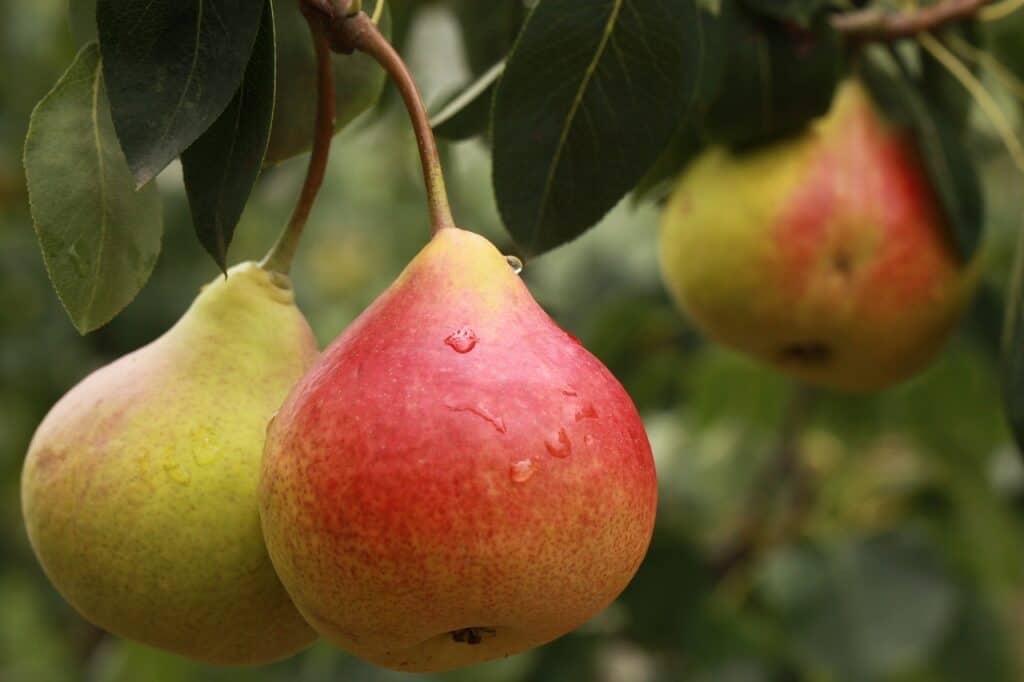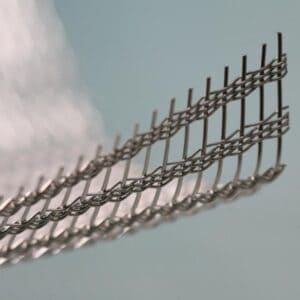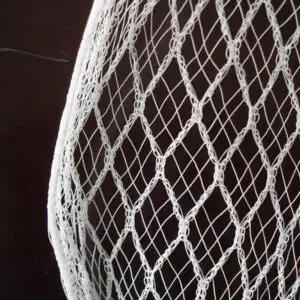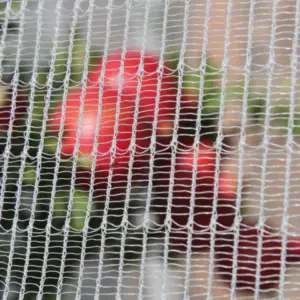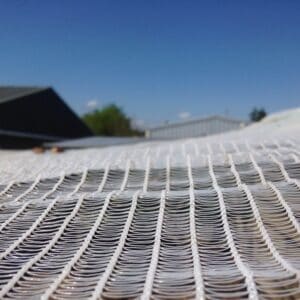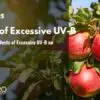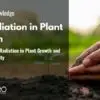The hailstorm is a great threat to pear growers. The hail shred or rip by pear leaves leading to damage that severely decimates your harvest.
The hail damage to pear trees varies in severity depending on the type of tree and the force and size of hail that falls. After a heavy hail, you will need to know how to care for hail-damaged plants and return them to their form and natural beauty.
The good news is that it is possible to train and prune a pear tree so that it grows into the desired shape and produces a bountiful harvest. In this blog post, we will discuss the basics of training and pruning a pear tree in your orchard after the hail.
Hail damage to Pears
After a severe hailstorm, it’s critical to inspect your pears. The hail will affect your pears’ in the following ways:
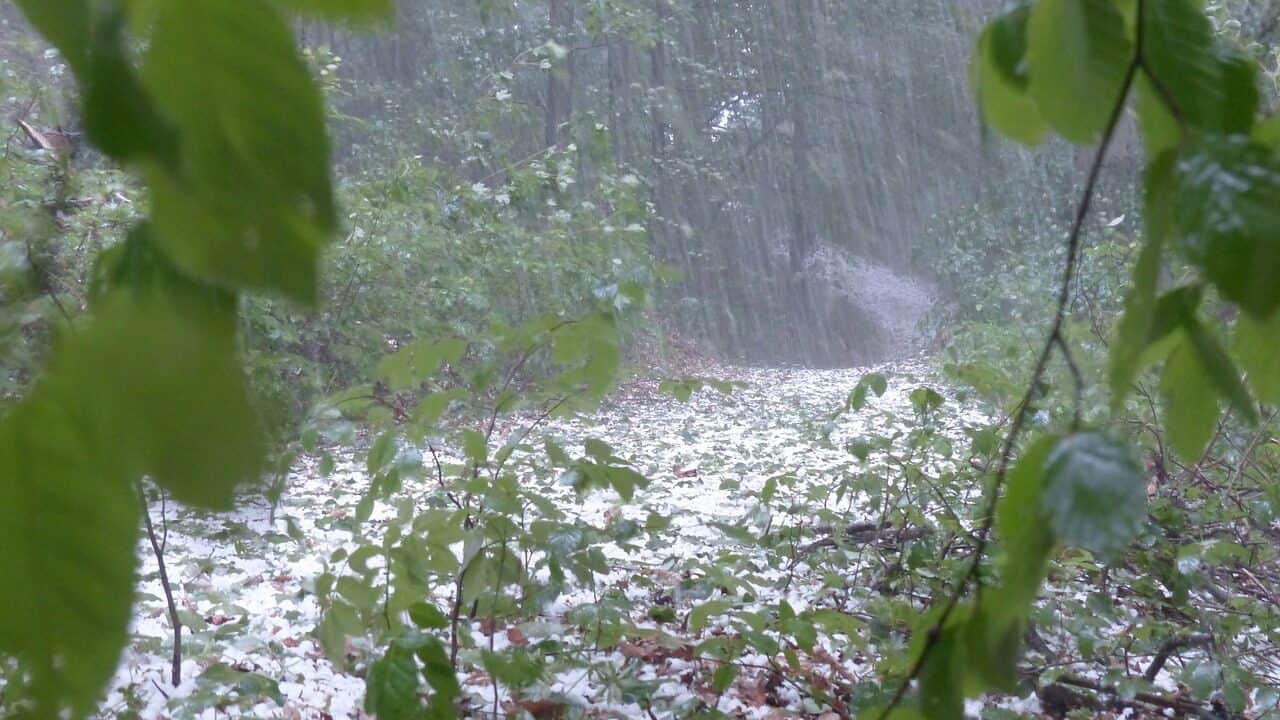
- Leaves and fruit fall off your pear trees.
- Pear leaves are damaged, torn, shredded, or knocked off.
- Broken or damaged branches and stems
- Flowers are destroyed and fall off.
- Fruits are damaged and pieces removed.
- Insects and pathogens can enter through hail-caused wounds.
- Fruit that has fallen to the ground might harbor bugs and diseases.
Reasons for Pruning Pear Trees After Hail
After the hail, prune your pears to manage the damages. Pruning pears is no different from other fruits such as apples. Below are the reasons to prune your pears after hail:
- It helps to establish the structure and size of a tree
Fruit tree pruning is essential as it assists in establishing a basic tree structure and controlling tree size.
- It helps to boost sunlight penetration
Pruning creates openings in the tree canopy that allow sunlight to penetrate and support leaf photosynthesis. Sunlight helps in the production of carbohydrates and energy that fuel the growth of roots, shoots, and fruits. Flower bud production can be reduced if there is insufficient sunlight penetration in the top of the trees during the growing season, which can harm fruits in the coming days.
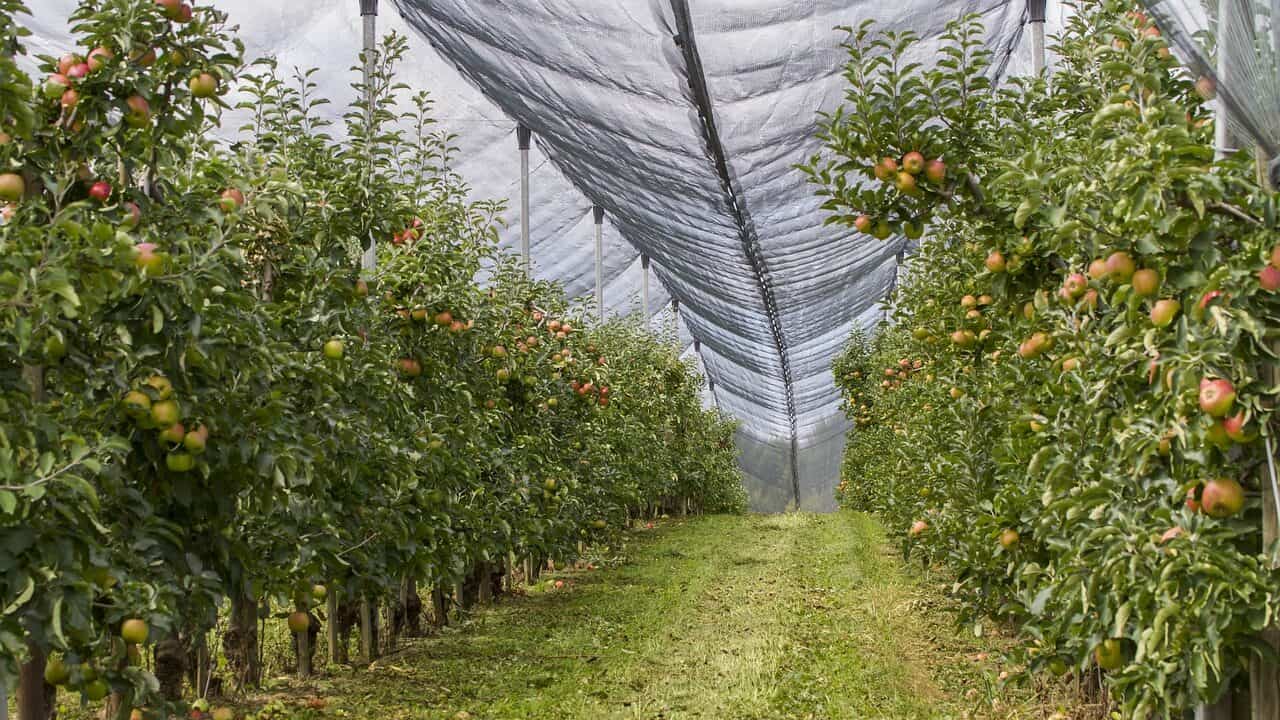
- Pruning helps in air circulation
Pruning minimizes branch crowding, reduces vegetative growth in the canopy, and allows for better air circulation, which diminishes humidity and allows for improved coverage of protectant products ( such as pesticides).
Tips for Pruning and Training Pear Trees
Here are tricks to help you manage your pear trees damaged by hail:
Visualize the outcome of your action before training or pruning a tree. You can not replace a pruned branch. Do not be in a rush.
Train as much as you can while removing as little as possible. Bending and tying shoots rather than cutting them out, particularly on pear trees, can stimulate early fruit production.
Always use sharp training tools to make clean cuts and avoid injuring the tree.
Throw away pruned out branches and shoots as they can be a home for insects and diseases. Discarding these plants parts will control the development of pest populations.
Prune the damaged stems and branches immediately to prevent infections. You can remove hail-damaged fruit to improve the yield and quality of the remaining fruit. Also, prune in summer to retrain your young pears and optimize new growth.
How to Train and Prune Pear Trees in Orchard
Start training and pruning your pear trees the day you plant them. Do not plant a tree and neglect it for years before starting to prune and train it. Neglect causes poor growth and stalled fruiting and poor fruit quality.
Train your pear tree into a conical (Christmas tree) shape in which the top of the tree is narrower than the bottom.
Train your trees to a modified leader system. Let several wide-angled limbs surround the central leader.
The tree should grow into a pyramidal shape as it matures.
Pay close attention to the angle at which the scaffold branches join the main trunk (the crotch angle). Vertically growing branches (with a crotch angle less than 45 degrees) typically have weak crotches that can split when the branch is worn down with fruit or ice.
A forty-five to sixty-degree crotch angle is ideal for providing structural strength, promoting fruit bud formation, and filling in the designated tree space horizontally.
Establish a Central Leader
It is critical to have a strong central leader. When a tree loses its leader dominance, it adopts an undesirable globular canopy shape with weak, narrow crotch angles and bad light dissemination.
The initial years of your tree’s life are essential to establishing a dependable central leader.
Eliminate any fruit that develops on the leader, or else the weight of the fruit will cause the leader to topple over, making it lose supremacy. Remove competing shoots before they develop into large, woody masses.
For young trees, the general rule of thumb is to eliminate or bend to horizontal branches that are larger than half the diameter of your central leader, so that they never become co-dominant.
Develop Scaffold Branches
Early in the tree’s growth, pick and train the scaffolds. Allowing too many scaffolds to grow from a single place on the trunk is unwise as it reduces the growth of central leaders.
Let the first scaffold be about eighteen inches above the ground, and subsequent scaffolds are distributed around the tree and spaced upwards six to eight inches apart. It takes a year or more to achieve optimal spacing. Select branches that are equally spread around the tree trunk so that their growth does not infringe on or shade adjacent scaffold branches.
As the tree grows, create a second tier of scaffold limbs 2–3 feet above the first set of scaffolds. Go for branches with wide crotch angles. The lowest branch of the second tier should be twenty-four inches above the top branch of the lower tier to reduce shading.
Keep the upper branches a bit shorter than the lower branches to avoid shading the lower ones.
Preventing Your Pears from Hail Damage
You may be proactive and safeguard your pears from damage if your location has heavy hailstorms.
By carefully assessing weather conditions, you can prevent hail damage in orchards. To protect your pears from hailstorms, check or listen to weather bulletins and react fast. Much of the damage can be avoided if you intervene immediately, and your plants will produce abundant fruits and excellent pears.
The hail protection netting is effective against hail, improving fruit quality and output in the current and subsequent growing seasons. Other benefits from hail net include pear. protection from:
- Sunburn
- Birds
- Bats
- Wind
- Insects
The hail protection net is a knitted net designed to keep your pears safe from hail. There are four types of nets: Drape hail net, leno weave netting, quad crossover canopy, and raschel triangle netting
Conclusion
Pruning and training are essential elements of growing a productive pear tree. Proper training gives you an easy-to-harvest tree, consistently high yields, and high-quality fruit.
Training and pruning your pear tree with care in the formative years helps the tree to mature in the right form and makes caring for it more manageable.
Eyouagro is a global agriculture protection textile industry and is always at your service. At Eyouagro, we offer the best and most effective commercial fruit tree netting for improving the quality of your pear fruits. Our primary goal is to make pear growers’ lives fruitful by increasing the yield of their pears.
Kindly contact us at info@eyouagro.com to fill your order or make inquiries. Please also visit us at Eyouagro.com for more information.

